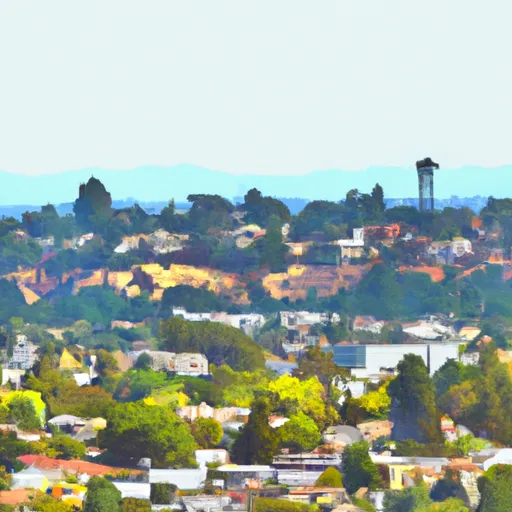-
 Snoflo Premium
Snoflo Premium
Get unlimited access to all our content
With no Ad interruptions! - Start Your Free Trial Login with existing account
Three-Rivers
Eden Index
Climate
9.5
•
Recreation
6.9
•
Community
1.2
•
Safeguard
6.5/10

Three Rivers, California is a small community located in Tulare County, nestled at the foothills of the Sierra Nevada Mountains. The town is known for its stunning natural beauty and serves as a gateway to the nearby Sequoia and Kings Canyon National Parks.
The climate in Three Rivers is Mediterranean, characterized by hot, dry summers and mild winters. Average temperatures range from the mid-90s in summer to the mid-50s in winter. The area experiences very little rainfall, with most precipitation occurring between November and April.
Three Rivers is blessed with an abundance of water resources, owing to its proximity to the Kaweah River and the Sierra Nevada watershed. The river provides a rich habitat for various aquatic species, making it a popular spot for fishing and kayaking enthusiasts. Additionally, the area is home to several scenic waterfalls, such as Tokopah Falls and Marble Falls, which attract hikers and nature lovers.
Outdoor recreation opportunities in Three Rivers are abundant. The nearby national parks offer countless trails for hiking, biking, and horseback riding, allowing visitors to explore the towering sequoia trees and picturesque landscapes. Adventure seekers can also enjoy rock climbing, whitewater rafting, and camping in the stunning wilderness. With its mild climate and breathtaking scenery, Three Rivers is a haven for outdoor enthusiasts.
What is the Eden Index?
The Snoflo Eden Index serves as a comprehensive rating system for regions, evaluating their desirability through a holistic assessment of climate health, outdoor recreation opportunities, and natural disaster risk, acknowledging the profound impact of these factors on livability and well-being.
Climate Health Indicator (CHI): 9.5
Three-Rivers receives approximately
759mm of rain per year,
with humidity levels near 36%
and air temperatures averaging around
16°C.
Three-Rivers has a plant hardyness factor of
9, meaning
plants and agriculture in this region tend to thrive here all year round.
By considering the ideal temperature range, reliable water supplies, clean air, and stable seasonal rain or snowpacks, the Climate Health Indicator (CHI) underscores the significance of a healthy climate as the foundation for quality living.
A healthy climate is paramount for ensuring a high quality of life and livability in a region, fostering both physical well-being and environmental harmony. This can be characterized by ideal temperatures, reliable access to water supplies, clean air, and consistent seasonal rain or snowpacks.
Weather Forecast
Streamflow Conditions
Tulare-Buena Vista Lakes
Area Rivers
Tulare-Buena Vista Lakes
Snowpack Depths
Tulare-Buena Vista Lakes
Reservoir Storage Capacity
Tulare-Buena Vista Lakes
Groundwater Levels
Recreational Opportunity Index (ROI): 6.9
The Recreational Opportunity Index (ROI) recognizes the value of outdoor recreational options, such as parks, hiking trails, camping sites, and fishing spots, while acknowledging that climate plays a pivotal role in ensuring the comfort and consistency of these experiences.
Access to outdoor recreational opportunities, encompassing activities such as parks, hiking, camping, and fishing, is crucial for overall well-being, and the climate plays a pivotal role in enabling and enhancing these experiences, ensuring that individuals can engage in nature-based activities comfortably and consistently.
Camping Areas
| Campground | Campsites | Reservations | Toilets | Showers | Elevation |
|---|---|---|---|---|---|
| Tule Rec Area | 104 | 685 ft | |||
| Wishon | 39 | 4,075 ft | |||
| Hedrick Pond - State Forest | 14 | 6,233 ft | |||
| Rocky Hill | None | 683 ft | |||
| Balch Park | 71 | 6,459 ft | |||
| Hidden Falls - State Forest | 8 | 6,188 ft | |||
| Moses Gulch - State Forest | 7 | 5,484 ft | |||
| Shake Camp - State Forest | 11 | 6,475 ft | |||
| Coffee Camp | None | 1,864 ft | |||
| Frazier Mill - State Forest | 46 | 6,251 ft |
Nearby Ski Areas
Catastrophe Safeguard Index (CSI):
The Catastrophe Safeguard Index (CSI) recognizes that natural disaster risk, encompassing floods, fires, hurricanes, and tornadoes, can drastically affect safety and the overall appeal of an area.
The level of natural disaster risk in a region significantly affects safety and the overall livability, with climate change amplifying these risks by potentially increasing the frequency and intensity of events like floods, fires, hurricanes, and tornadoes, thereby posing substantial challenges to community resilience and well-being.
Community Resilience Indicator (CRI): 1.2
The Community Resilience Indicator (CRI) recognizes that education, healthcare, and socioeconomics are crucial to the well-being of a region. The CRI acknowledges the profound impact of these elements on residents' overall quality of life. By evaluating educational resources, healthcare accessibility, and economic inclusivity, the index captures the essential aspects that contribute to a thriving community, fostering resident satisfaction, equity, and social cohesion.

